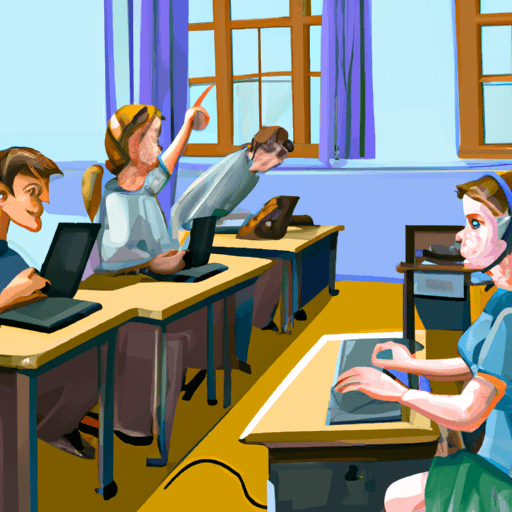The Impact of Technology on Education in the Last Decade
In the past decade, technology has had an immense impact on the way people learn and the way teachers teach. From online learning to virtual classrooms, digital textbooks, and collaborative learning platforms, the use of technology in education has drastically changed the educational landscape. This article will explore how technology has impacted education over the last decade, the advantages and challenges associated with its increased usage, and what the future of technology in education may look like.
Online Learning
The most notable change in education due to technology is the rise of online learning. Through online learning, students can access educational materials from anywhere in the world. This has made learning more accessible to students who may not have access to traditional classrooms or who have difficulty commuting to school. Furthermore, online learning allows students to learn at their own pace, giving them more control over their learning experience.
Virtual Classrooms
Virtual classrooms are also becoming increasingly popular. They are essentially online versions of traditional classrooms, allowing students to attend classes from anywhere in the world. Virtual classrooms allow teachers to give lectures and collaborate with students in real-time, as well as providing students with access to resources such as recordings of lectures and additional materials.
Digital Textbooks
In addition to online learning and virtual classrooms, digital textbooks have also become popular in recent years. Digital textbooks are more cost-effective than their physical counterparts, and they also provide students with access to additional resources such as videos, interactive activities, and quizzes. Digital textbooks also allow teachers to track student progress, making it easier for them to provide personalized instruction and support.
Collaborative Learning Platforms
Collaborative learning platforms are also becoming increasingly popular. These platforms allow students to work together on projects and assignments, as well as providing them with access to resources such as discussion forums and course materials. Collaborative learning platforms also enable teachers to track student progress and provide feedback in real-time.
Advantages and Challenges
The increased use of technology in education has provided many advantages, such as increased access to educational materials and increased collaboration between students. However, it has also presented some challenges. For example, some students may struggle to adapt to the new digital tools and environments. In addition, there is the risk of cyberbullying and the potential for students to become distracted by non-educational materials.
Future of Technology in Education
In the future, the use of technology in education is likely to continue to increase. Online learning, virtual classrooms, digital textbooks, and collaborative learning platforms are likely to become even more popular, and new technologies such as augmented reality and artificial intelligence are expected to revolutionize the way students learn. Furthermore, as technology continues to evolve, so too will the way teachers teach.
Overall, technology has had a significant impact on education in the past decade. From online learning to virtual classrooms, digital textbooks, and collaborative learning platforms, technology has opened up new possibilities for both students and teachers. While there are some challenges associated with the increased usage of technology in education, the advantages far outweigh the disadvantages. As technology continues to evolve, it is likely that the educational landscape will continue to change as well.

















Comments
Leave a Comment